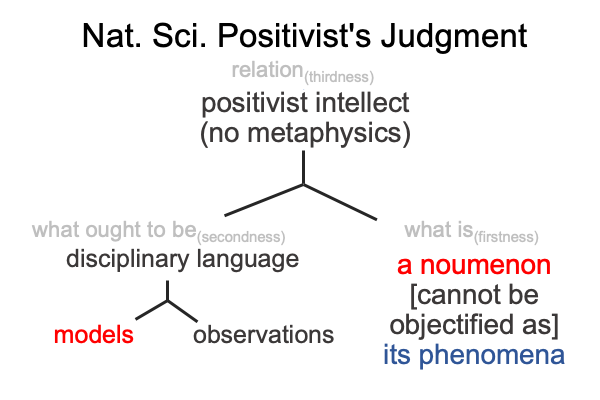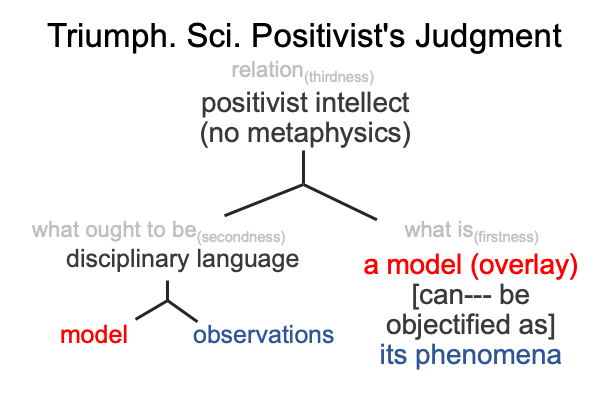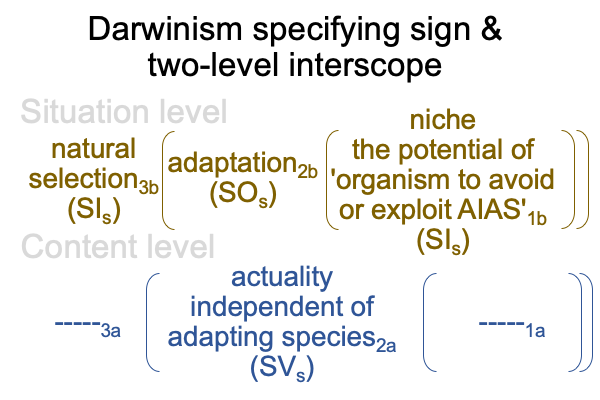0097 Section 2.4 concerns evolution.
Botanist Jean Baptiste Lemark (1744-1829), natural philosopher Charles Darwin (1809-1882) and English polymath Herbert Spencer (1820-1903) observe natural phenomena. Each builds models from their observations. In doing so, each follows the Positivist’s judgment, to varying degrees.
0098 Here is a picture, one again.

0099 The noumenon may be described as each species, making its way in the world. Jean Baptiste Lemark is a botanist, who argues that nature (not God) is the supreme author of all evolving things and conceives of evolution as nature’s self-governance. This alone is a breakthrough viewpoint, especially in regards to the idea of semiotic agency. The question that he apparently does not answer is how self-governance works on the potential of diverse courses of action.
0100 In this regard, Lemark’s models do not satisfy the expectations of success that allows a triumphalist scientist to place his models, over the noumenon, thereby resolving the tension introduced by Immanuel Kant.

0101 A lifetime later, Charles Darwin arrives at a model that does the job. Noting the practices of animal breeders, Darwin claims that nature itself selects for certain properties. Nature acts as ruthlessly as human animal breeders (who kill the animals that do not satisfy expectations). “Breeder selection” becomes “natural selection”. The trait being selected for gets re-labeled as “adaptation”. The breeder selects for a particular trait based on some opportunity. That opportunity becomes the niche, the potential to exploit ‘something’ independent of the adapting species.
0102 Darwin’s paradigm, is it really a model?
Or is it a noumenon?
It is not based on observations and measurements of the animal itself, but of what a human breeder is doing in order to um… play God with another species.
Oh, it is alright. The breeder is really “playing nature”.
0103 Here is a picture of the resulting two-level interscope.

0104 Now, Darwin’s two-level interscope should look familiar. It embodies a specifying-sign relation.
Using dog breeding as an example, burrows of various forest animals2a (SVs) stands for the long-narrow body of the dachshund or “badger dog”2b (SOs) in regards to selective breeding3b of a dog able to participate in the hunting of badgers1b (SIs).
